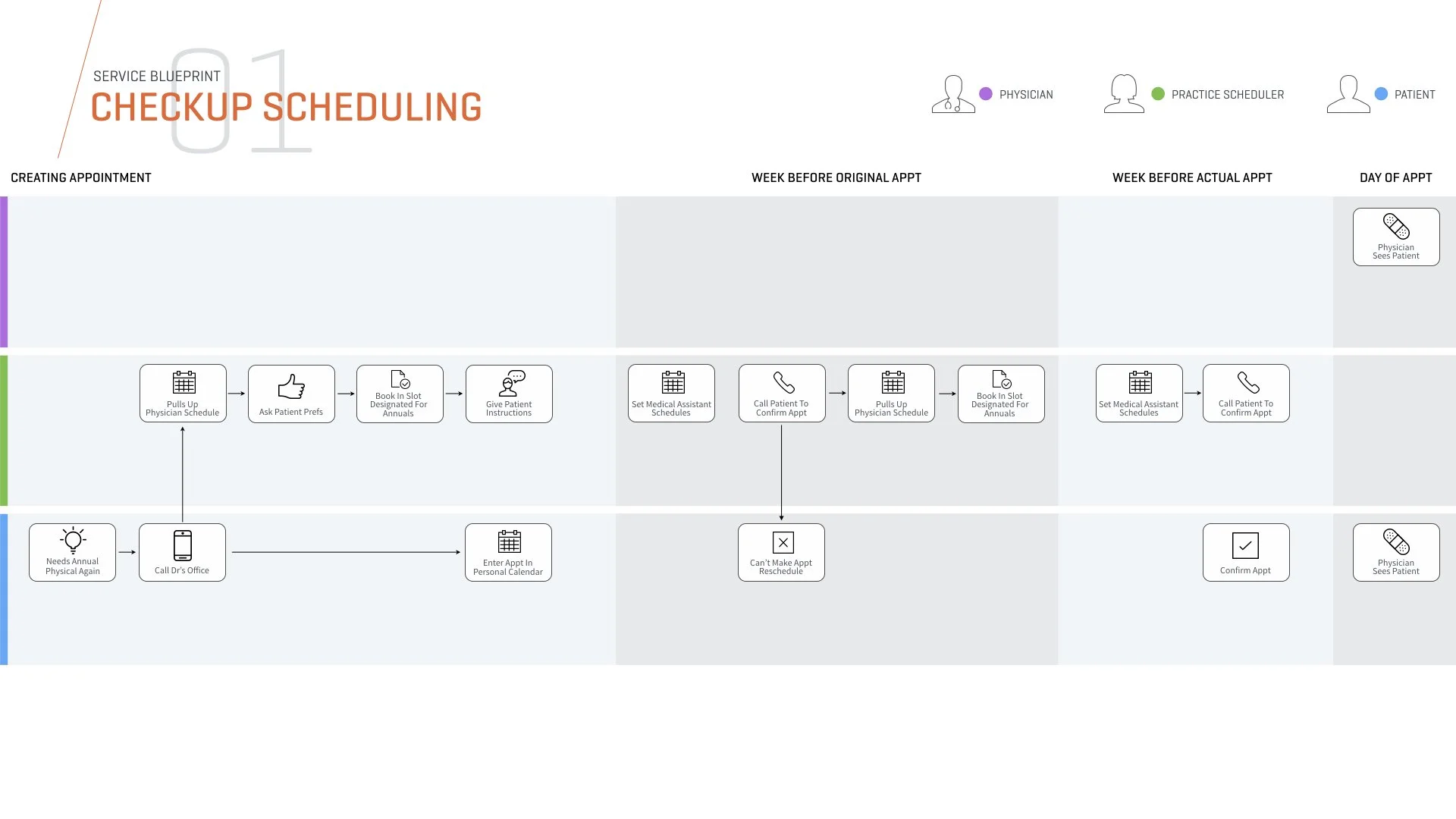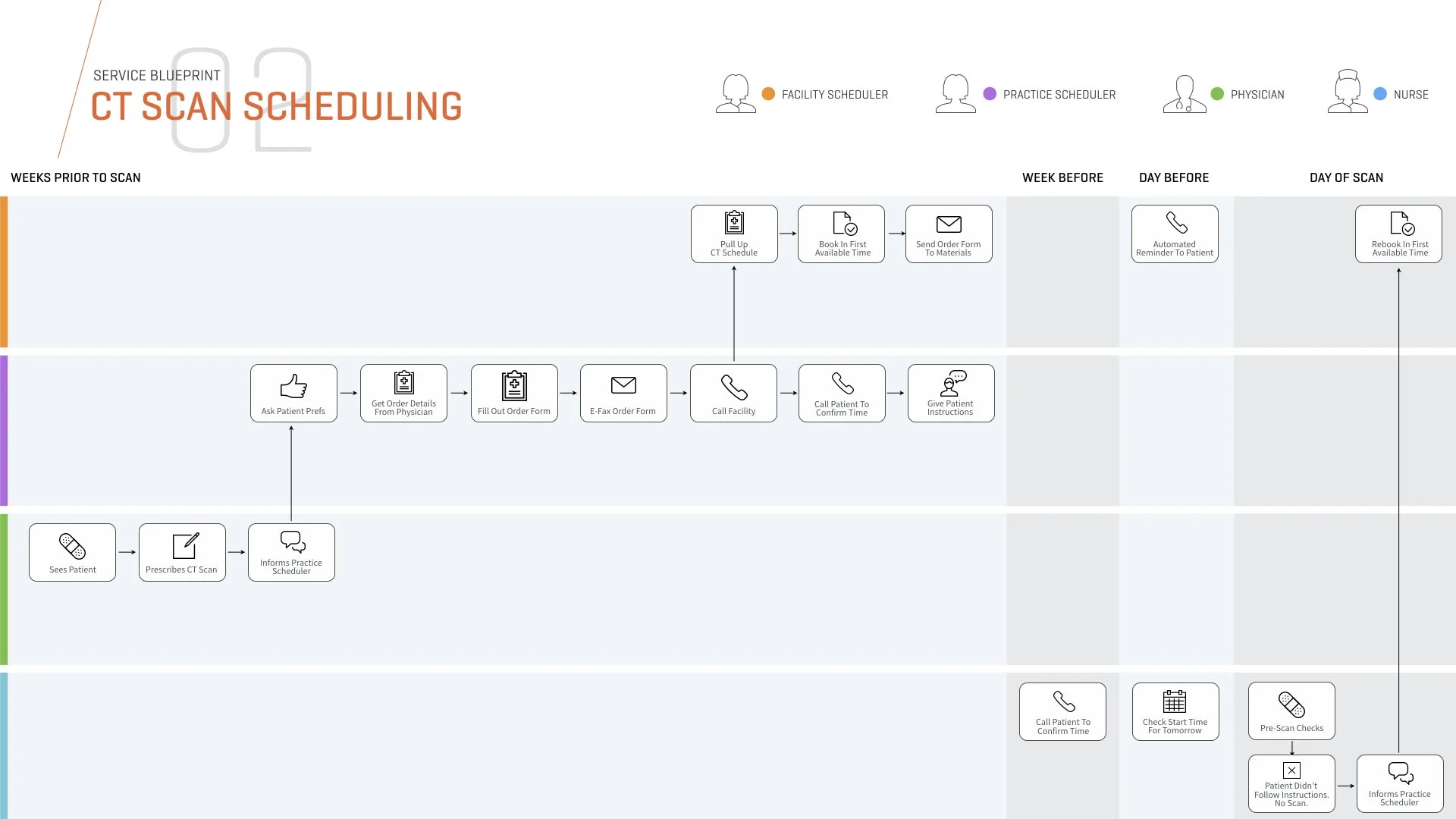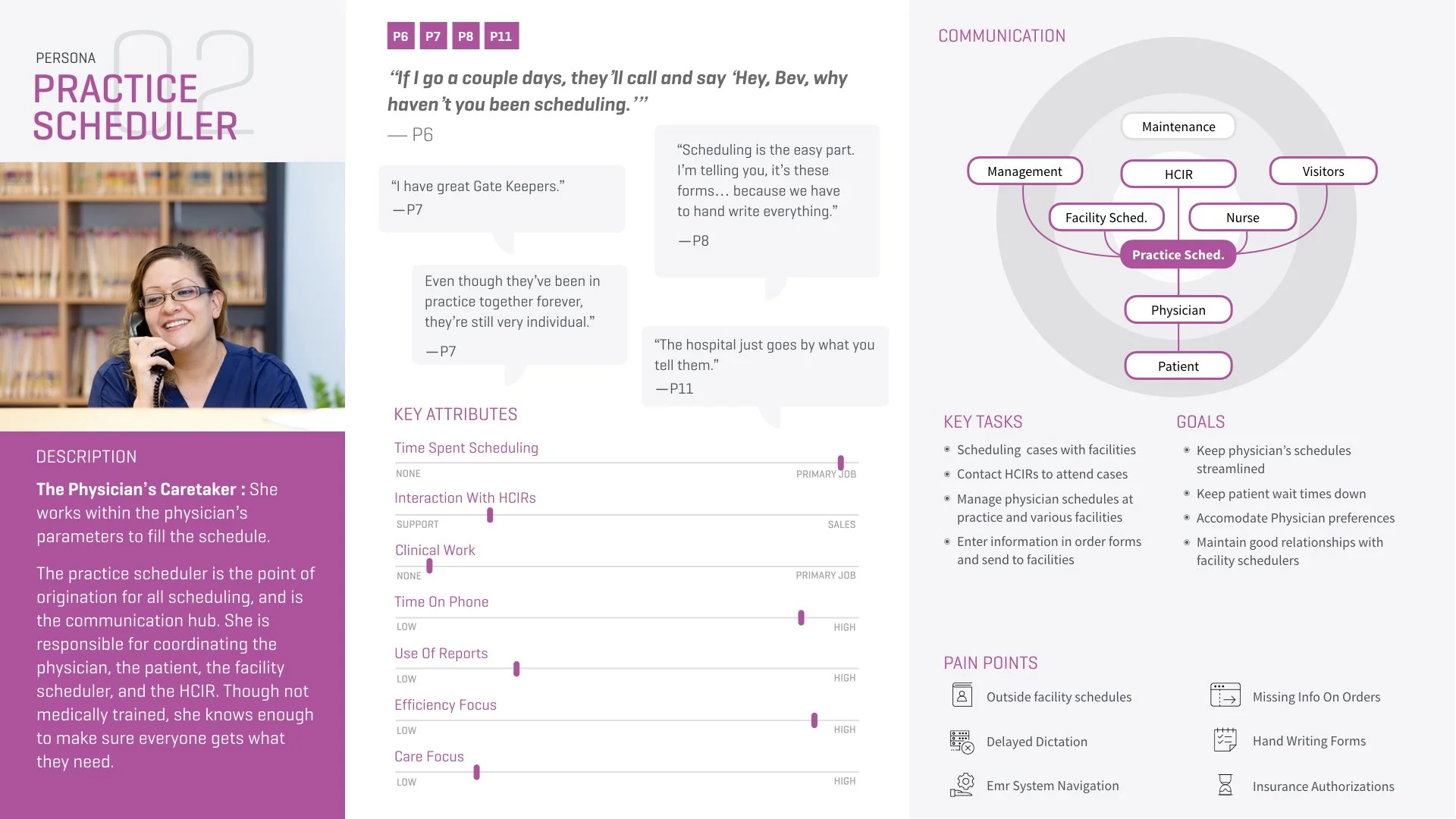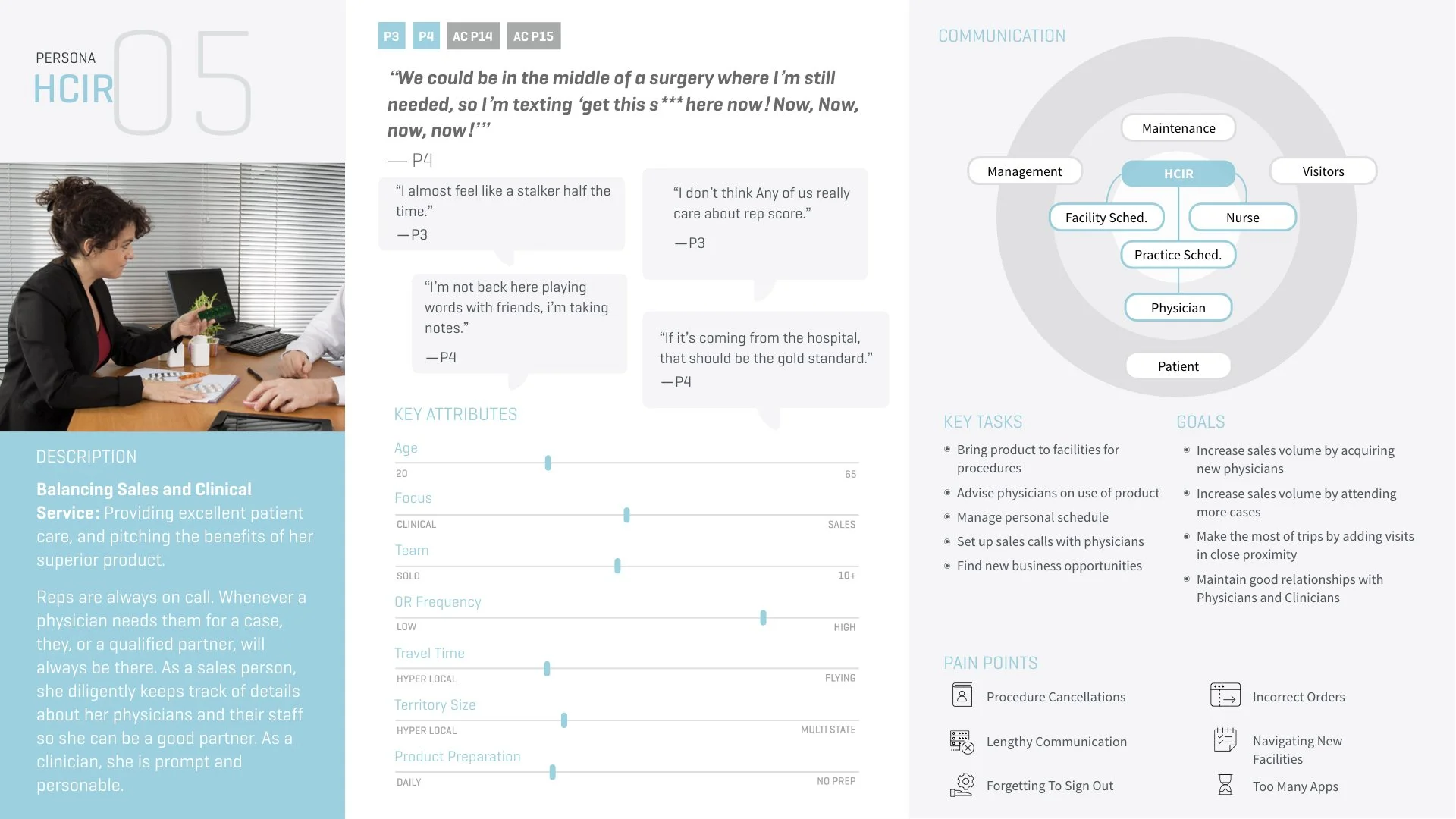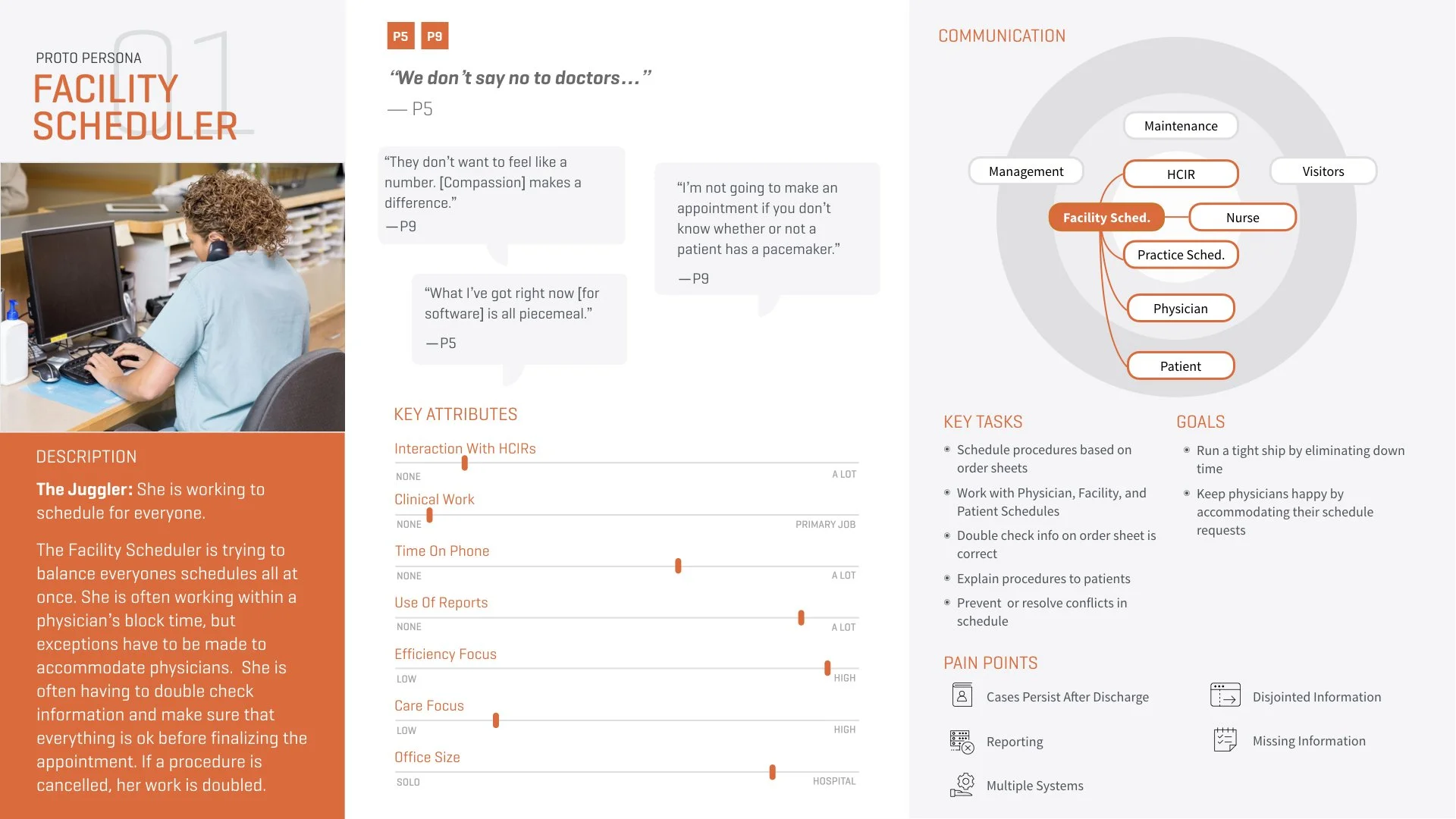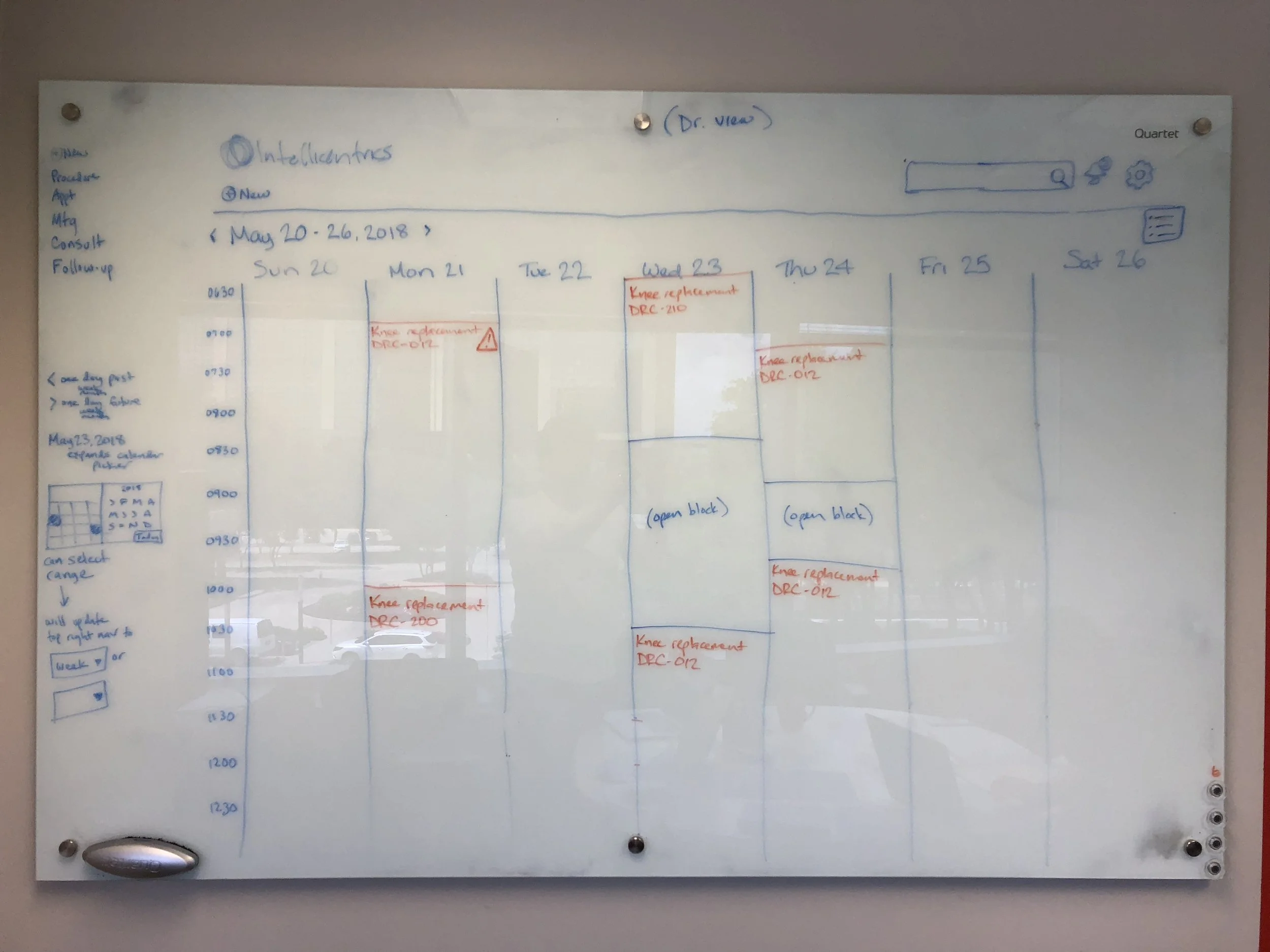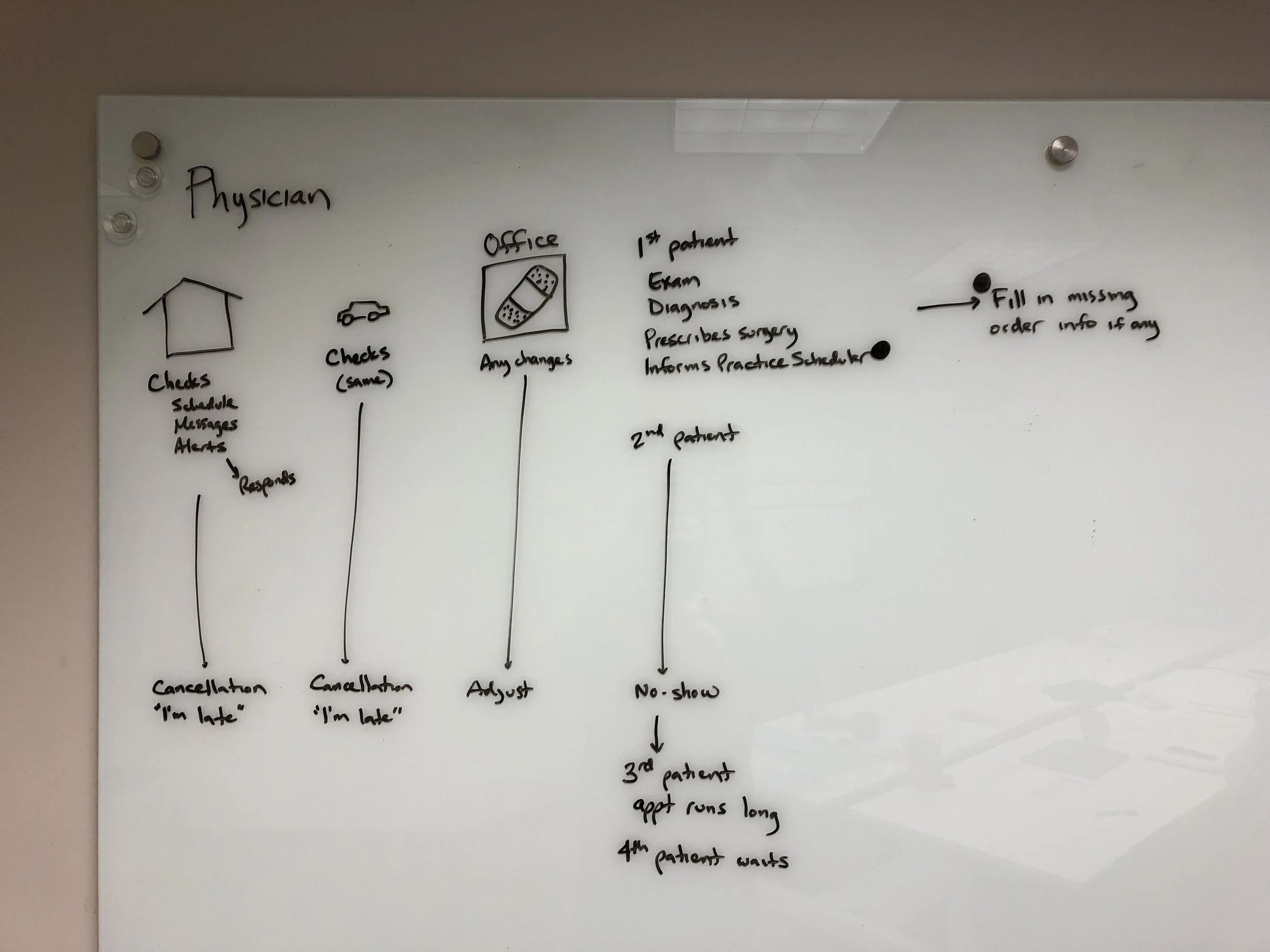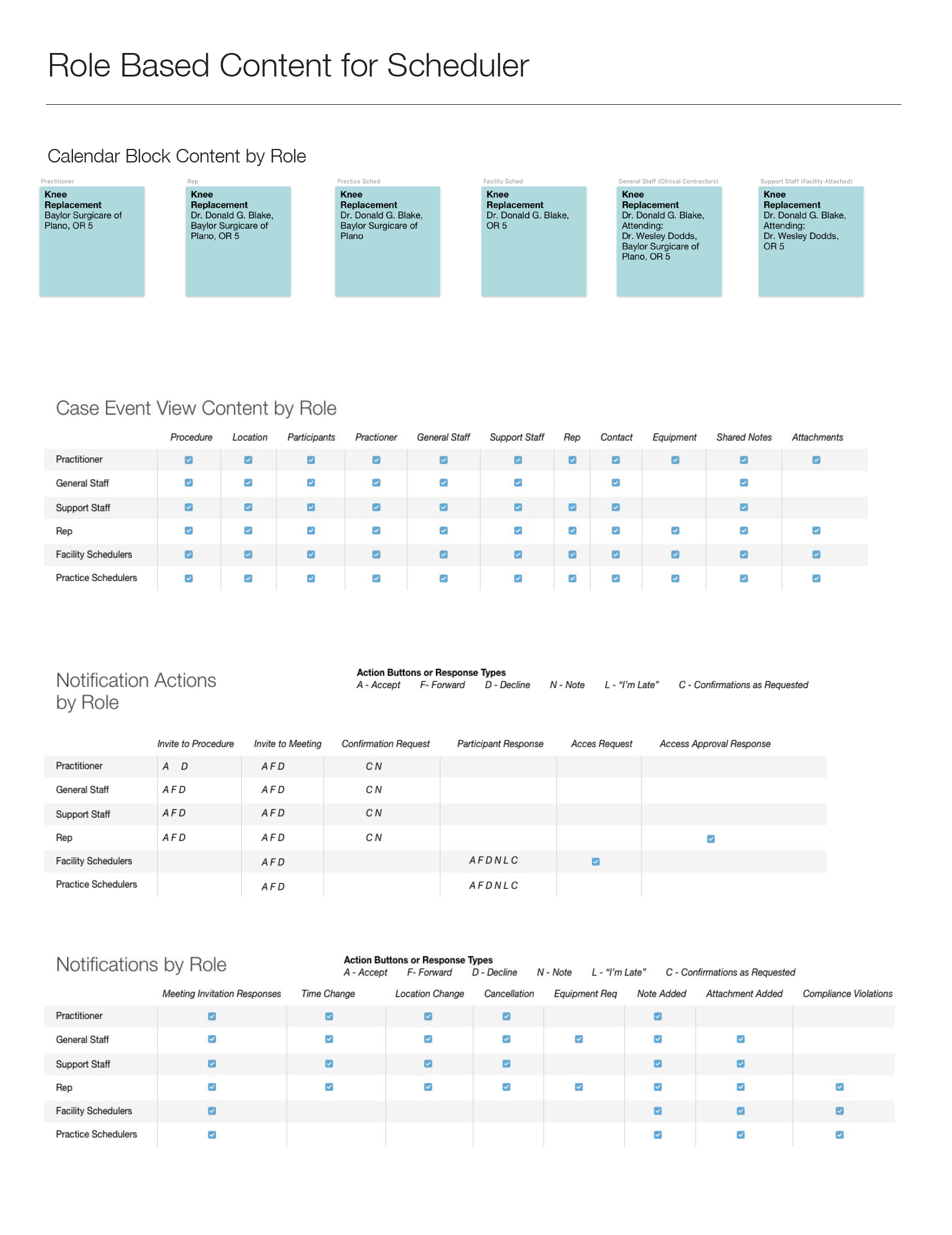
Expanding Into New Markets
Year: 2018
Duration: 5 months
Role: Experience Designer
Team: Experience Director, Project Manager, UX Researcher, Sr. Experience Designer
Tools Used: Pencil & Paper, Sketch, Zeplin, Invision, Whiteboards, Sticky Notes
Summary:
IntelliCentrics, a healthcare credentialing company, wanted to grow into new business areas by providing tools to hospitals.
We conducted field research across 11 medical facilities to observe user needs in context and identify high ROI opportunities.
We delivered and validated designs for a multisided HIPAA-compliant scheduling app for web and on-the-go mobile users to simplify the work of medical schedulers, securely coordinating staff and equipment for procedures, while increasing access for medical device sales reps.
Background:
IntelliCentrics provides digital healthcare credentialing, particularly for medical reps and providers who move between hospitals. They sought to expand into new markets by improving the procedure scheduling experience for providers at large facilities by creating a HIPAA-compliant surgery scheduling application.
Goals:
Discover the needs of Scheduler’s 5 main user roles as relates to procedure scheduling:
Practice schedulers
Facility schedulers
Physicians
Anesthesiologists (also called CRNAs) and other traveling providers
Medical reps (also called HCIRs or healthcare industry reps)
Determine where Scheduler could provide the most value to each role
Design and test an application which supports each role on the device they use most
Learn what’s required to achieve mass market adoption for Scheduler
Research
Field research culminated in 25 contextual inquiries—18 inquiries at the start of the project, and another 7 inquiries conducted midway through user testing to focus on the unique needs of facility schedulers.
Round 1:
April 2018
17 Contextual Inquiries
Practice Schedulers, HCIRs, Physicians, CRNAs
Round 2:
August 2018
8 Contextual Inquiries
Facility Schedulers & Physicians
Contextual Inquiries:
My fellow designer, Daniel Sanchez, and I sat down with participants in their daily hospital, practice, or facility environment to learn about their needs in context. We conducted 90-minute 1:1 sessions of in-depth interviews and work observation with:
Practice schedulers
Facility schedulers
Physicians
Anesthesiologists (also called CRNAs)
Medical reps (also called HCIRs or healthcare industry reps)
Synthesis
Affinity Diagramming
We accumulated over 1,200 data points during contextual interviews, which we organized via inductive analysis to reveal common issues, needs and themes. From this analysis, our team identified 30 high value opportunities for Scheduler.
Visualizing the Data
Service Blueprints
Drawing on our research with Schedulers, HCIRs, Physicians, and CRNAs, we created service blueprints, mapping the flow of people and tasks through common scheduling scenarios that customers might encounter: a patient check-up, a CT scan, and a surgery.
Personas
We distilled our findings to craft personas for each role. These would guide our design efforts, and help stakeholders understand each role’s needs and relationship to the procedure scheduling process.
Wall Walk + Opportunity Prioritization
IntelliCentrics stakeholders were invited to review the Service Blueprints, Personas, and research findings, to add feedback, and ultimately to determine which opportunities would provide the greatest value to users. Together, we aligned on the following needs which informed our MVP design targets:
MVP Scheduler Needs:
1) Contextual support throughout the app to proactively guide and help users gain system fluency
2) Quick-yet-secure access to reference restricted info on the go
3) Integrations with map tools and facility wayfinding
4) Timely and relevant notifications of schedule changes or facility compliance updates
5) Secure mobile document transfer to facilitate verification, order forms, etc
6) Shared visibility to case details, attendees, equipment, and changes across multiple devices
Visioning + Product Design
Whiteboarding + Detailed Design:
Once initial feature targets were defined, I worked with fellow designer Daniel to design Scheduler’s integral task flows. We spent significant time diagramming, sketching, and whiteboarding to explore each role’s happy path, edge cases, and unexpected needs which came up. These we refined in collaboration with our researcher, to create high fidelity web and mobile designs in our tool of choice, Sketch.
A facility-based medical scheduler's view of their calendar
A scheduler's view of a case
The scheduler requests confirmation that a rep will attend
A tooltip warns the scheduler that this rep is not credentialed
User settings
User Testing
We validated designs with members of each user group in our User Testing and Observation Lab. Using clickable Invision prototypes, we ran 4 rounds of testing.
Validation Round 1:
Facility Schedulers: Scheduling and editing a procedure
This testing revealed a need for more contextual research into the needs of Facility Schedulers, which we conducted between Validation Rounds 2 and 3.
Validation Round 2:
CRNAs: Accepting a procedure invitation
Validation Round 3:
Facility Schedulers: Viewing and editing details on a procedure, inviting and messaging an HCIR
Validation Round 4:
HCIRs: Sending an event invitation and Accepting a procedure invitation
A medical sale rep's view of their calendar
A rep's alternate view of their calendar as a list
A rep's view of a case
A rep forwards a case invitation to a colleague
A rep receives the scheduler's request to confirm attendance
The rep sends confirmation that he'll be there
A rep can easily the scheduler that he is running late to a procedure
The Results
In support of this effort, our team successfully:
Defined strategy, opportunities, and features based on user needs
Created desktop and mobile experiences to support the unique needs of each role
Prototyped and tested designs with real users to refine the user experience
Provided dev-ready designs and integration support to the client-side engineering team
Ultimately, our research and testing reduced risk by demonstrating that Scheduler would not achieve market viability–While the app could vastly improve communications, it would need to securely integrate with a facility’s electronic medical record ecosystem to provide the visibility and information continuity that were critical to successful procedure scheduling.
